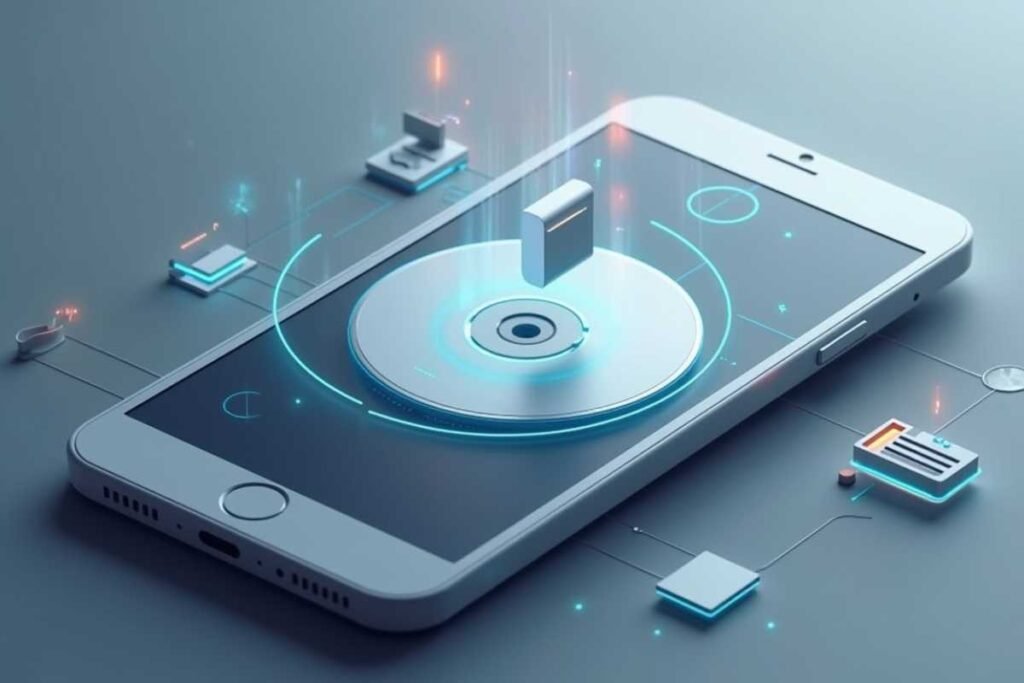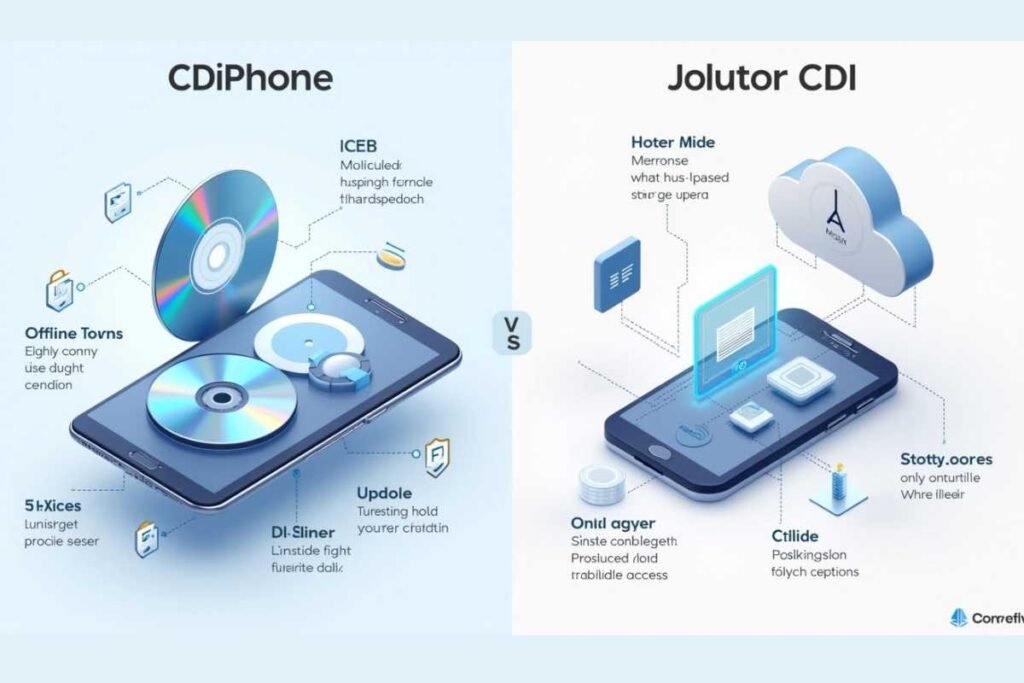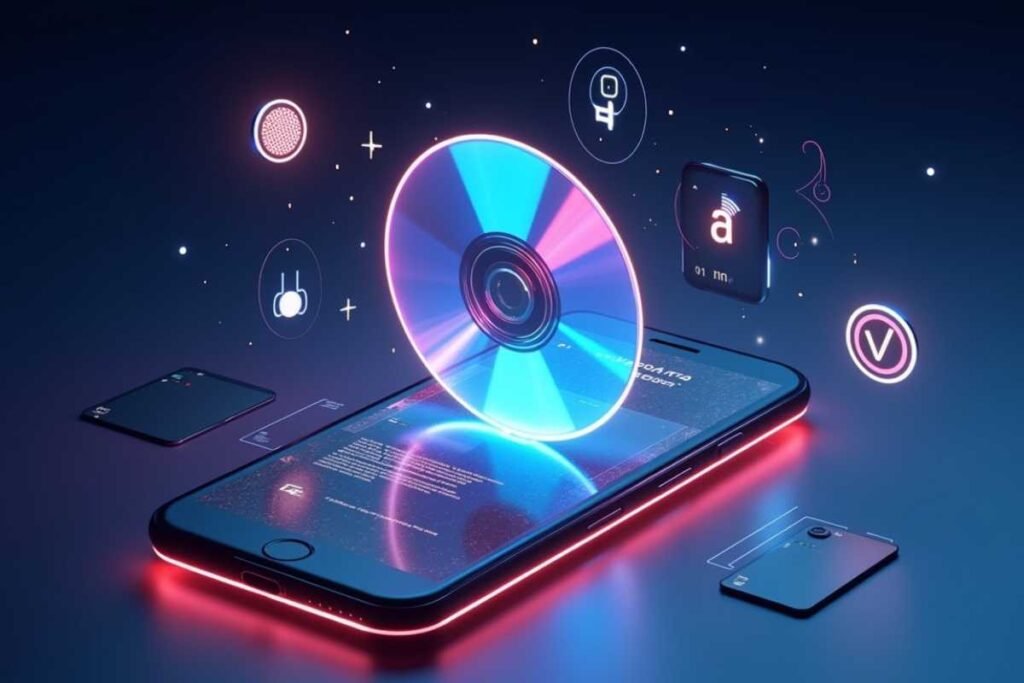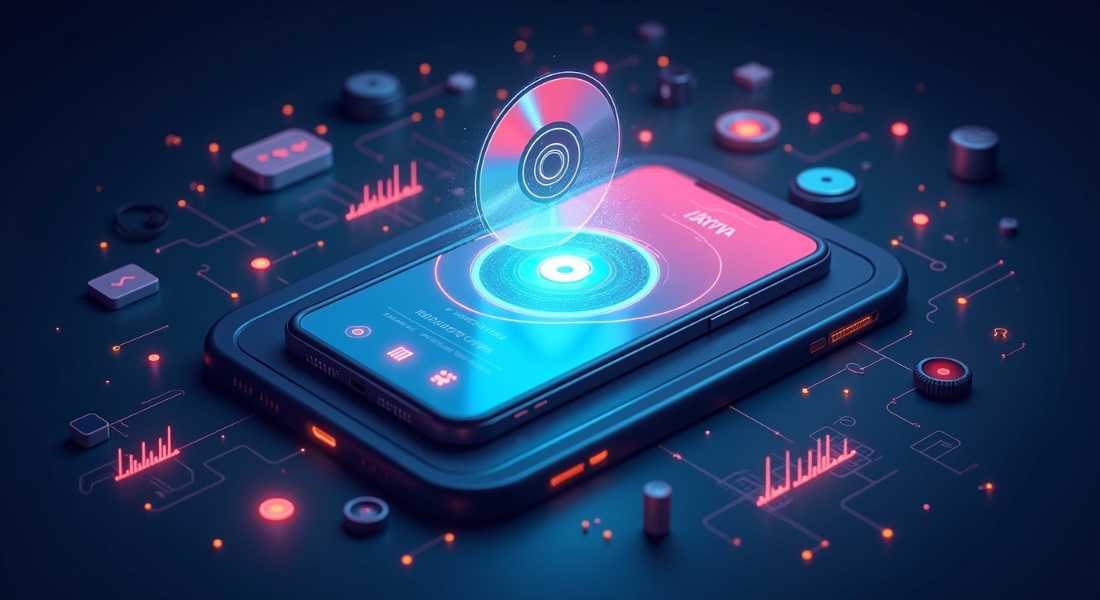The cdiphone has emerged as a unique concept in mobile technology capturing the interest of tech enthusiasts, audiophiles, and everyday smartphone users.
In today’s world, where smartphones dominate communication, entertainment, and work, the idea of integrating traditional compact disc (CD) elements with modern devices has drawn attention.
This article explores the cdiphone in detail, explaining what it is, its significance, how it works, and why it matters in practical terms.
What is CDiPhone? Definition and Basics

The term cdiphone refers to a hybrid concept that combines aspects of physical CD-based storage with the functionalities of modern smartphones.
Unlike typical devices that rely solely on digital storage the cd iphone emphasizes offline accessibility, tangible media interaction, and the ability to preserve data in a physical format.
At its core, a cd iphone can involve hardware adaptations, software integrations, or conceptual workflows that allow users to transfer music, files, or other data from CDs to mobile devices.
While it is not an official Apple product the concept has gained traction in technology communities as a way to merge nostalgia with modern usability.
The cdiphone concept focuses on three primary aspects:
- Physical Media Integration: Users can access data stored on CDs through mobile devices, either via external adapters or dedicated software solutions.
- Hybrid Storage Capabilities: It supports a combination of traditional flash memory, cloud options, and CD based content management.
- User-Centric Design: By enabling offline access and physical ownership of media, the cdiphone addresses concerns about digital subscriptions, cloud dependency, and data permanence.
Understanding these basics helps to appreciate the practical value of the cdiphone and its role in bridging the gap between physical and digital media.
Benefits and Importance of CDiPhone
The cdiphone offers several benefits that make it relevant for a variety of users, ranging from casual listeners to professionals who handle sensitive or large amounts of data.
1. Offline Accessibility
One of the primary advantages of the cdiphone is offline access. Unlike purely digital storage, which often requires cloud access a cd iphone allows users to retrieve their media and files without an internet connection.
This is particularly useful in areas with limited connectivity or for users who prefer to keep their data locally.
2. Data Ownership and Security
Physical media provide a sense of ownership that is often absent in cloud based solutions. With a cdiphone, users can maintain control over their content secure it through hardware encryption, and reduce risks associated with online breaches.
This makes the device appealing to professionals, educators, and anyone concerned about digital privacy.
3. Preservation of Quality
For audiophiles and music enthusiasts, CD based content offers superior sound quality compared to compressed digital formats. The cd iphone supports lossless audio formats ensuring that music retains its original clarity, depth, and fidelity.
4. Educational and Professional Applications
The cdiphone concept can be applied in educational institutions, offices, and medical facilities. Teachers can distribute offline learning material on CDs professionals can archive critical documents securely, and healthcare providers can manage sensitive records without relying entirely on cloud storage.
5. Sustainability and Resource Efficiency
By using physical media as a storage medium the cdiphone can reduce reliance on energy intensive cloud servers. This encourages longer device lifecycles and promotes low waste digital practices.
The combination of these benefits shows why the cd iphone is more than a novelty it is a functional solution addressing current challenges in mobile technology.
How CDiPhone Works: Step by Step Guide!
Understanding how a cdiphone operates requires examining both the hardware and software components involved. While the implementation can vary depending on the model or method the general process involves a few key steps:
Step 1: Preparing the CD
Users begin by selecting the CD they wish to transfer. This could be a music album, educational material, or any data stored on a compact disc. Ensuring that the CD is clean and free from scratches is important for accurate data transfer.
Step 2: Connecting to a Device
The CD can be connected to the smartphone using either external CD drives, USB adapters, or dedicated docking stations compatible with the cd iphone concept. Some setups may also use wireless solutions or local networks to facilitate transfer.
Step 3: File Ripping and Conversion
To make the CD content compatible with a smartphone the data must be ripped using software designed to handle CD formats. Tools can convert audio or files into formats such as FLAC, ALAC, AIFF, or AAC, maintaining quality while allowing seamless playback on the device.
Step 4: Storage and Organization
Once the data is transferred the cdiphone software organizes the content. Advanced AI or file management systems can sort files by type, frequency of use, or user preference providing easy navigation and quick access.
Step 5: Playback and Usage
Users can now enjoy the content on their cdiphone. Whether listening to music accessing educational material, or reviewing archived documents the experience blends physical media control with mobile convenience.
Step 6: Maintenance and Updates
Regular backups and updates ensure the longevity of both the device and the media. While CDs offer durability maintaining the software and hardware components of the cdiphone ensures a reliable and secure user experience.
This step by step guide highlights how the cd iphone integrates traditional media into modern mobile workflows effectively.
CDiPhone vs Traditional Smartphones

The cdiphone differs from standard smartphones in several important ways:
- Storage: Traditional smartphones rely primarily on flash memory and cloud solutions, while cdiphones combine flash, cloud, and physical media storage.
- Offline Access: Conventional phones may limit offline access to apps and content whereas cd iphones ensure data is available without internet connectivity.
- Data Longevity: CDs can last for decades providing a more permanent archival solution than standard flash memory.
- Ownership and Security: Physical media allow users to maintain full control reducing dependency on subscriptions and online platforms.
- Customization: Some cd iphone setups allow modular hardware or swappable discs enhancing adaptability and personal use.
These distinctions make the cdiphone a unique tool for users who value control, quality, and versatility.
Applications of CDiPhone in Daily Life
The cdiphone concept can be applied across various contexts to improve user experience and functionality.
Personal Use
For individuals, the cd iphone allows for a hybrid digital and physical media experience. Music collectors can preserve albums while professionals can maintain secure backups of documents. Offline accessibility ensures uninterrupted access to content wherever they are.
Educational Settings
Schools and universities can benefit by distributing coursework on physical media reducing reliance on internet connectivity. Teachers can provide offline learning kits, and students can access materials without subscription barriers or connectivity issues.
Professional Environments
Law firms, hospitals, and corporate offices can archive sensitive data using cd iphone setups. This reduces dependency on cloud services and enhances security while ensuring long term data preservation.
Creative Industries
Musicians, filmmakers, and digital artists can use cdiphone workflows to manage high quality media files. Lossless formats and physical media integration support archival, distribution, and creative project management efficiently.
Tips for Maximizing CDiPhone Efficiency
To get the most out of a cdiphone users should consider the following strategies:
- Always use high quality CDs and maintain them to prevent data loss.
- Organize content using software that supports tagging, categorization, and metadata management.
- Regularly back up files to additional storage solutions to ensure redundancy.
- Use compatible formats like FLAC or ALAC for music to retain audio fidelity.
- Ensure external hardware adapters are properly powered and connected to avoid errors during data transfer.
Applying these practices helps users enjoy the full benefits of cd iphone technology.
Common Issues and Solutions with CDiPhone
Even with its advantages users may encounter challenges while using a cdiphone.
- Compatibility: Some CDs may not be compatible with the software or adapters. Using standard formats and verified tools can mitigate this.
- Hardware Constraints: External drives or adapters require proper power supply and connection. Portable setups should be tested for reliability.
- Data Corruption: Physical media can be scratched or damaged. Handling CDs carefully and performing regular backups is essential.
- Software Learning Curve: File management tools may require initial setup. Users should familiarize themselves with ripping software and file organization methods.
Awareness of these issues ensures smooth and effective usage of the cd iphone system.
Advantages Over Alternative Solutions

While streaming services and cloud storage are convenient the cdiphone offers distinct advantages:
- Control over Media: Users own the content and are not subject to subscription limitations.
- Long-Term Preservation: CDs can store data for decades without loss of quality.
- Offline Functionality: No need for continuous internet connectivity.
- Higher Audio Quality: Lossless playback maintains original sound fidelity.
- Hybrid Flexibility: Combines physical and digital solutions in a single workflow.
These benefits reinforce why the cd iphone concept remains relevant for various users.
Conclusion
The cdiphone represents a thoughtful integration of physical media with modern smartphone capabilities. By combining tangible storage with advanced mobile technology it addresses the needs of users who value offline access, data ownership, high quality media, and long term preservation.
From personal use to professional applications the cd iphone provides practical solutions while bridging the gap between nostalgia and contemporary functionality.
Its ability to merge physical and digital experiences makes it a unique addition to the mobile technology landscape, offering users control, security, and efficiency in ways traditional smartphones alone may not provide.
FAQs
What exactly is a cdiphone?
A cdiphone is a hybrid concept that integrates compact disc media with smartphone technology allowing users to transfer, store, and access CD content on mobile devices.
How do I transfer CDs to a cdiphone?
To transfer, insert the CD into a compatible drive use ripping software to convert it into supported formats like FLAC or ALAC, and then sync the files with your device.
Can I use a cdiphone without external adapters?
Some setups may require external CD drives or docking stations but software based workflows can emulate CD browsing without hardware attachments.
What audio formats work best with cdiphone?
Lossless formats such as FLAC, ALAC, and AIFF retain original sound quality. Compressed formats like AAC or MP3 are suitable for casual listening or limited storage.
Is cloud storage compatible with cdiphone?
Yes, while the cd iphone emphasizes physical media cloud storage can be used for backup and additional accessibility without affecting the primary local files.
Who should consider using a cdiphone?
Audiophiles educators professionals managing sensitive files, creative artists, and users seeking offline data access can benefit the most from a cdiphone setup.







